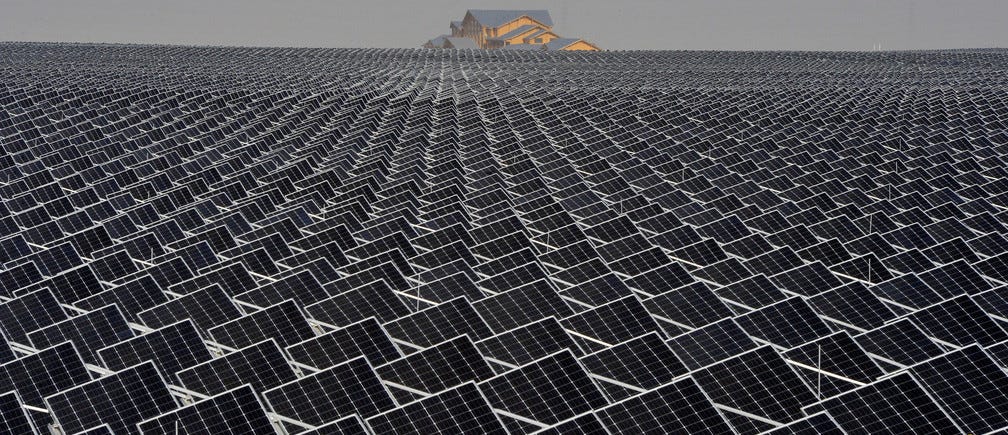Sha Song
 The factories and power plants that have driven its economic growth have also polluted its air, water and soil, to the point where environmental hazards could lead to a significant risk to China’s society and economy, if not corrected in a timely manner. In a bid to tackle these challenges, China’s government has declared a “war on pollution” and introduced a number of green initiatives.
The factories and power plants that have driven its economic growth have also polluted its air, water and soil, to the point where environmental hazards could lead to a significant risk to China’s society and economy, if not corrected in a timely manner. In a bid to tackle these challenges, China’s government has declared a “war on pollution” and introduced a number of green initiatives.
 Years of life saved per person. Image: Image: China National Environmental Monitoring Center
Years of life saved per person. Image: Image: China National Environmental Monitoring Center
 The factories and power plants that have driven its economic growth have also polluted its air, water and soil, to the point where environmental hazards could lead to a significant risk to China’s society and economy, if not corrected in a timely manner. In a bid to tackle these challenges, China’s government has declared a “war on pollution” and introduced a number of green initiatives.
The factories and power plants that have driven its economic growth have also polluted its air, water and soil, to the point where environmental hazards could lead to a significant risk to China’s society and economy, if not corrected in a timely manner. In a bid to tackle these challenges, China’s government has declared a “war on pollution” and introduced a number of green initiatives.
Here are the most important ones:
China has taken steps to dismantle coal-fired power plants, reduce overall emission levels and cut particulate-matter emission rates. Huge progress has been made on air quality, and there are now fewer smog days in China’s largest cities.
Better regulation
The former Ministry for Environmental Protection has been transformed into the Ministry of Ecology and Environment (MEE), a new entity with broader, clearer responsibilities. The new ministry will oversee all water-related policies, for example, from ocean resources management to groundwater. Previously, these were scattered among different departments. The ministry is also in charge of policies on climate change.
Funding a greener future
China needs an estimated additional RMB 40.3 trillion ($6.4 trillion) to RMB 123.4 trillion ($19.4 trillion) to finance the transition to a greener economy. It has started collecting an environment tax to help fund its environmental policies, and is also trying to attract more green investment.
China’s Belt and Road Initiative (BRI), a massive global programme aimed at improving inter-connectivity between countries, inspired by the ancient Silk Road, seeks to boost trade and economic growth in Asia and beyond. As Vice Premier Liu He said at the World Economic Forum’s Annual Meeting in Davos this year, reducing pollution is one of China’s main strategic goals as it pursues this initiative, along with preventing major financial risks and alleviating poverty.
 Years of life saved per person. Image: Image: China National Environmental Monitoring Center
Years of life saved per person. Image: Image: China National Environmental Monitoring Center
The BRI will be backed by considerable resources. At maturity, investments in the initiative are expected to hit around $4 trillion, stemming from private sources, dedicated funds, and multilateral development banks. If aligned with sustainable development priorities, these resources have considerable potential to help advance the green agenda.
The next challenge is to improve green investment standards. Recently, China launched the Environmental Risk Management Initiative for China’s Overseas Investment. There is huge potential to “green” the Belt and Road Initiative, if Chinese financial institutions and enterprises improve the environmental risk management of their overseas investments and adopt responsible investment principles. Green bonds are a win-win for investors and developing countries, since they fund the green infrastructure projects that are so urgently needed by many of these countries.
Sustainable development zones
Earlier this year, the Chinese government approved three sustainable development zones, which will implement the United Nations 2030 Sustainable Development Goals:
Shenzhen is China’s innovation engine. This zone will integrate technologies in sewage treatment, waste utilization, ecological restoration, and artificial intelligence to solve issues from resource management to pollution.
This zone will focus on innovations that tackle desertification, creating solutions that can be replicated by other regions facing the threat of encroaching deserts.
Targeting air and water pollution, this zone will foster innovative solutions that can be replicated by regions relying on resource extraction.
Tech companies as green innovators
China’s technology giants play a vital role in sustainable development. Tencent, Baidu and Alibaba are among the world’s top 10 internet companies. Online technology — particularly e-commerce, internet banking and social media — is accelerating the pace of change.
For example, Ant Financial, a banking subsidiary of Alibaba, is a founding partner of the Green Digital Finance Alliance. This alliance aims to use digital technology to advance green finance.
Over 200 million of Ant’s users signed up to Ant Forest, an app that gamifies carbon footprint tracking. The app prompts users to cut greenhouse gas emissions in real life, demonstrating the massive potential of Fintech for supporting sustainable development. By the end of January 2017, the approach had saved 150,000 tonnes of CO2.
Originally published at www.weforum.org.
No comments:
Post a Comment